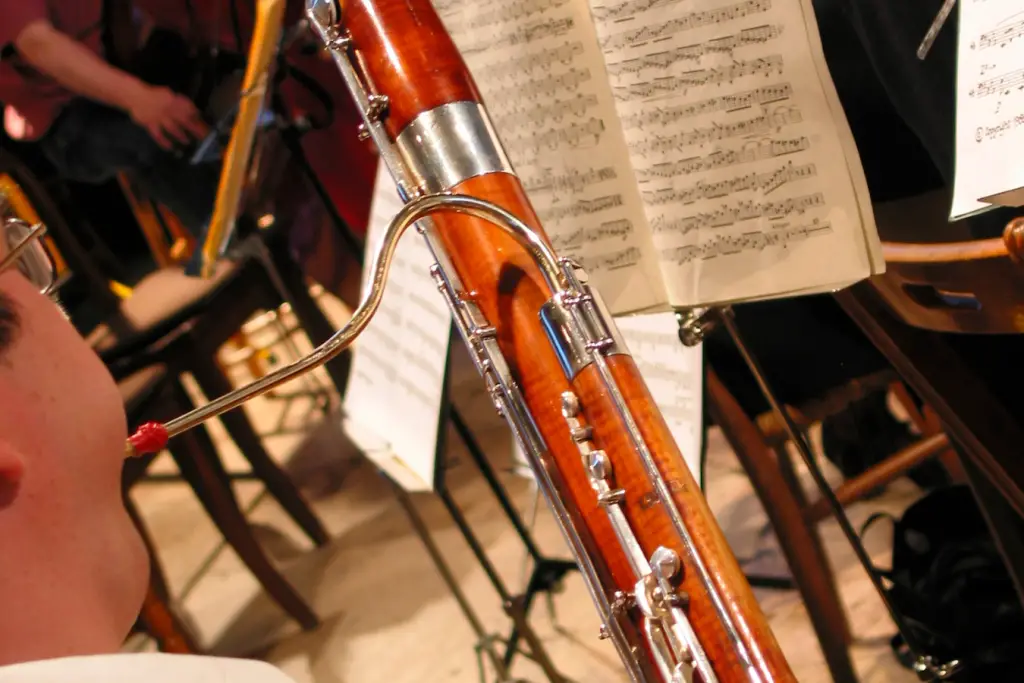The bassoon is one of the most unique instruments in the orchestra, not just because of its rich and versatile sound but also due to its distinctively long and folded design. While its elongated structure might seem cumbersome, every aspect of the bassoon’s design serves a specific purpose, contributing to its remarkable tonal range and functionality. This article delves into why the bassoon is so long, exploring the instrument’s design, purpose, and benefits.
The Basics of the Bassoon’s Length
The bassoon is approximately 4 feet long when assembled, but if its bore were unfolded, it would stretch over 8 feet in length. This significant size is key to producing its deep, resonant tones and wide range of pitches.
Why the Length Matters
The length of the bassoon is essential for several reasons:
- Tonal Depth: The long bore allows the bassoon to produce low, rich notes that define its sound.
- Pitch Range: Its design accommodates a range of over three octaves, from the low B-flat to high E.
- Acoustic Resonance: The extended air column enhances the instrument’s ability to resonate and amplify sound.
The Folded Design: A Practical Solution
Despite its length, the bassoon is crafted in a folded design to make it manageable for players. Here’s how it works:
- Boot Joint: The U-shaped boot joint connects the two parallel bores, effectively “folding” the instrument in half.
- Portability: Without this feature, the bassoon would be unwieldy, making it difficult to hold or transport.
The Physics of the Bassoon’s Length
1. Acoustic Principles
The bassoon operates on the principle of standing waves within its bore. The length of the bore determines the wavelengths of the sound waves it can produce:
- Longer Bore = Lower Notes: The extended length supports long wavelengths, which correspond to lower frequencies.
- Shorter Bore = Higher Notes: Shorter wavelengths produce higher frequencies, achievable through tone holes and key mechanisms.
2. Bore Shape
The bassoon’s bore is conical, tapering from the reed to the bell. This shape affects its acoustics in several ways:
- Harmonic Overtones: A conical bore enhances the harmonic series, contributing to the bassoon’s warm and expressive tone.
- Smooth Transitions: The gradual taper helps produce even transitions between notes.
Comparing the Bassoon to Other Instruments
The bassoon’s design is distinct when compared to other woodwind instruments:
1. Bassoon vs. Clarinet
- Length: The bassoon’s folded bore is significantly longer.
- Sound: While the clarinet has a cylindrical bore and produces a brighter sound, the bassoon’s conical bore gives it a mellower tone.
2. Bassoon vs. Oboe
- Size: The oboe is much shorter, with a range focused on higher pitches.
- Tone: The bassoon has a deeper, more resonant sound.
Benefits of the Bassoon’s Length
The bassoon’s extended design offers several advantages:
- Wide Range: Its length allows for a versatile range, making it suitable for both bass and tenor roles.
- Dynamic Expression: The instrument’s design supports nuanced dynamics, from soft whispers to powerful fortissimos.
- Unique Character: The bassoon’s tone is often described as warm, expressive, and even comedic, thanks to its ability to produce rapid changes in pitch and dynamics.
Challenges of the Bassoon’s Length
While its length is a critical feature, it also presents some challenges:
1. Ergonomics
- The bassoon requires a seat strap or harness for support during playing.
- Players must navigate a complex system of keys and tone holes.
2. Assembly and Maintenance
- The instrument’s size and folded design mean careful assembly is necessary to avoid damaging its delicate components.
- Regular cleaning and maintenance are required to keep the bore free of blockages.
How the Length Affects Playing Technique
1. Breath Control
- The long bore demands steady and controlled airflow to produce a consistent tone.
- Players must develop strong breath support to manage the instrument’s resistance.
2. Finger Coordination
- The placement of keys requires precise finger movements, especially for rapid passages.
- The spacing between keys can be challenging for players with smaller hands.
3. Tone Production
- The length amplifies the impact of embouchure and reed control, making these elements critical to producing a clear, focused sound.
Historical Evolution of the Bassoon’s Length
The bassoon’s design has evolved over centuries:
- Renaissance Period: Early bassoons, known as dulcians, were shorter and simpler in design.
- Baroque Era: The instrument’s length increased, and the folded design was introduced to extend its range.
- Modern Bassoons: Today’s bassoons are the result of refinements in bore shape, key mechanisms, and materials, all aimed at optimizing their length and functionality.
Fun Facts About the Bassoon’s Length
- If the bassoon’s bore were straightened, it would be taller than most players!
- The folded design makes it one of the most portable large woodwind instruments.
- Its length contributes to its role as the orchestra’s “clown,” capable of producing both solemn and comedic effects.
Conclusion
The bassoon’s remarkable length is a defining feature of its design, allowing it to produce its signature low, resonant tones and extensive pitch range. While its size poses certain challenges, the benefits far outweigh the drawbacks, making the bassoon an indispensable part of orchestras, chamber groups, and solo performances. By understanding the reasons behind its length and design, musicians and enthusiasts can better appreciate the craftsmanship and acoustic principles that make the bassoon such a unique and captivating instrument.

